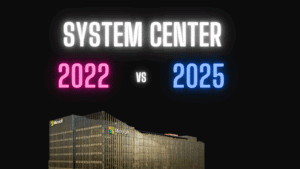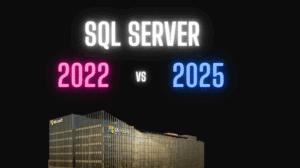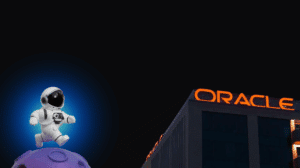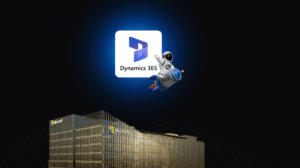Unraveling the Tangle: SOA, Microservices, and the Myth of the ‘Bad Implementation’
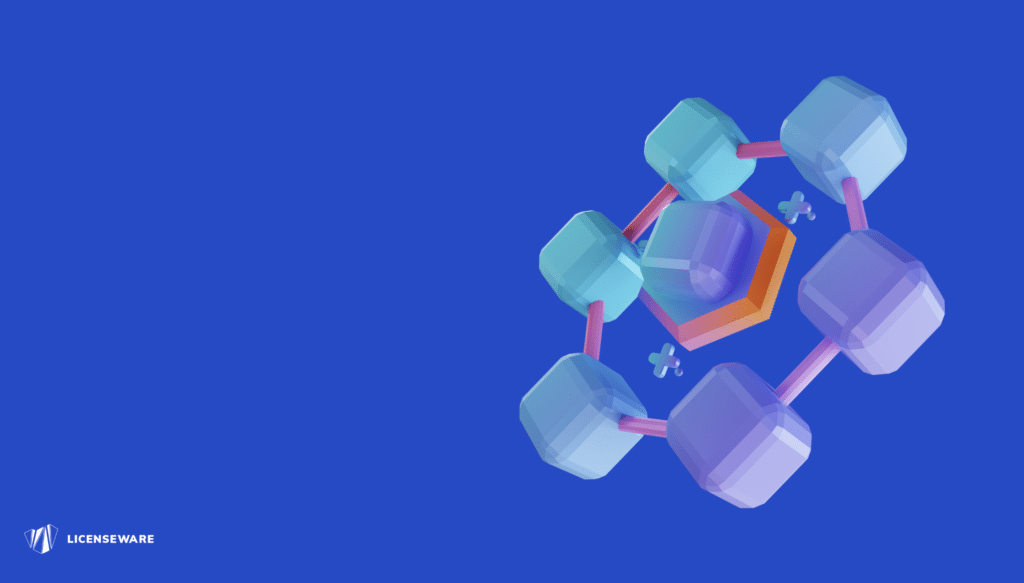
In the bustling frontier of software architecture, where ‘microservices’ is often the buzzword du jour, there lies an understated foundation that many modern developers may not have directly encountered yet interact with daily: Service-Oriented Architecture (SOA). Before microservices began dominating tech conversations, SOA revolutionized how businesses thought about IT systems. It broke down monolithic applications into interoperable services, introducing a level of flexibility and reuse that was unprecedented at the time.
Today, as we celebrate the agility and scalability that microservices promise, it’s crucial to acknowledge that they didn’t emerge in a vacuum. SOA provided the blueprint for decoupled services, which microservices have refined and scaled down. This post is a nod to the game-changing era of SOA, aiming to bridge the knowledge gap and show how its principles are still at the heart of many ‘modern’ architectures. It’s a journey back to the roots to explore how SOA shaped the path for the distributed systems we strive to perfect today.
Historical Context: The Technical Trek from Databases to Distributed Services
Let’s rewind to the beginning: applications were essentially front-ends directly connected to databases. This was simple, but as scalability became a buzzword and more users hit the systems, this model started to crack. Performance issues and the struggle to maintain a growing codebase became the bane of developers’ existence.
As these concerns grew, middleware solutions came into play, acting as an intermediary layer that handled the business logic and data access. This setup started to address the issues of scalability but introduced new challenges in managing the middle layer. Nevertheless, it was a pivotal step towards more sophisticated architectures, setting the stage for what would become a transformative approach: Service-Oriented Architecture (SOA).
SOA was a paradigm shift. It wasn’t just about connecting points A and B; it was about defining services that encapsulated business functions and exposed them through well-defined interfaces. Using XML for data interchange and SOAP for messaging, SOA enabled a level of decoupling that allowed for independent development, testing, and deployment of services.
The challenges with SOA were distinct: services could become too granular, leading to a proliferation of interfaces that were difficult to manage or too generic, resulting in a loss of the agility that SOA aimed to provide. Moreover, the heavy reliance on XML and SOAP often meant a performance hit due to the size and complexity of the messages being passed around.
Despite these challenges, SOA provided a solid foundation for the principles that would underpin microservices. It introduced the idea of breaking down applications into discrete components that could be developed, maintained, and upgraded independently. Tools and platforms evolved to support SOA’s principles, such as enterprise service buses (ESBs) that managed the orchestration of service interactions and complex event processing engines that handled asynchronous service communication.
In essence, SOA was not merely a stepping stone but a significant leap forward that established many of the core principles that are now celebrated in modern microservices architectures. It gave us the conceptual and practical groundwork for building scalable, modular applications. While microservices have since taken the limelight, often focusing on the finer details of containerization and orchestration, it’s SOA that laid the groundwork for thinking about software as a composition of services, each with its own life cycle.
Understanding SOA’s history and role is crucial, especially for the new generation of developers. It’s a reminder that many of the ‘new’ concepts they work with today are deeply rooted in the evolution that SOA represented. This look back is more than nostalgia; it’s about recognizing the depth and breadth of SOA’s influence on how we build software now and in the future.
Defining the Terms: Distinguishing SOA, Microservices, and Distributed Monoliths
When we talk about distributed architectures, it’s not a one-size-fits-all scenario. There’s a spectrum, and understanding where each architectural style sits on this spectrum is key to demystifying the whole concept.
SOA (Service-Oriented Architecture): This is the granddaddy of distributed architectures. SOA is about designing applications as a collection of services that can be reused for different purposes. The focus here is on business functionality — each service encapsulates a business process and exposes a set of interfaces. SOA is protocol-agnostic, although it historically favored communication via SOAP over HTTP, using XML as the message format.
SOA services tend to be larger and more comprehensive than what you’d see in a microservices architecture. They are designed to be platform-independent, interoperable, and often involve an enterprise service bus (ESB) to manage service interactions.
Microservices: This is the new kid on the block, at least compared to SOA. Microservices take the concept of SOA but go for a finer-grained approach. Each service is small, highly focused on doing one thing, and independently deployable. Communication is typically lighter and faster, often using REST over HTTP or lighter protocols like gRPC.
Microservices are designed to be polyglot, both in terms of data storage and the languages they’re written in, and they lean heavily on DevOps concepts like orchestration and service meshes.
Distributed Monolith: Just because an application is split into multiple services doesn’t mean it’s reaping the benefits of a distributed system. A distributed monolith is when you have services that are so tightly coupled they might as well be a monolith. Changes in one service necessitate changes in others, and they often have to be deployed together.
The key takeaway is that not every distributed architecture you see is a microservices architecture, and not every tightly coupled distributed system is a distributed monolith by default. It’s the design principles and the way the services interact that determine the architecture. SOA and microservices share a common heritage but diverge significantly in scale and philosophy. Understanding these distinctions is crucial in recognizing the architecture you’re working with — or aiming to build.
SOA: Thriving in the Enterprise
SOA, as an architectural pattern, is not confined to the technologies that popularized it; instead, it is defined by its ability to evolve with the technological landscape. It’s true that numerous legacy systems still rely on XML and SOAP, the stalwarts of traditional SOA implementations. These systems continue to serve critical business functions in many enterprises, proving the lasting value of the SOA pattern.
However, the longevity of SOA is not about clinging to older technologies — it’s about the pattern’s inherent adaptability. SOA was a revolutionary idea that laid the groundwork for modular and distributed system design, and it remains just as relevant today as when it was first conceived. The core principles of SOA — loose coupling, service abstraction, and service reusability — are timeless and technology-agnostic.
In the modern context, SOA continues to thrive, not just in its classic form but by embracing new technologies. While traditional tools like Oracle’s SOA Suite and Red Hat’s JBoss provide a robust infrastructure for enterprise systems, the pattern has expanded to include contemporary technologies such as Kafka for streamlining data flows and cloud platforms for agility and scalability.
The shift from SOAP to REST, from XML to JSON, and the integration of AMQP and MQTT protocols illustrate SOA’s versatility. These changes don’t represent a departure from SOA but rather its natural progression. The architecture is not static; it is dynamic and can incorporate a range of technologies, from the established to the cutting-edge.
SOA’s true strength lies in its foundational design principles, which can be applied across different eras of technology. Enterprises can and do implement SOA with a mix of legacy and modern technologies, choosing the best tools for their specific context and needs.
The evolution of SOA is a reflection of the evolution of enterprise IT itself — a continuum of innovation that respects the past’s contributions while forging ahead into the future. SOA’s principles have proven to be enduring, and as long as they continue to be relevant to business needs, SOA will remain an indispensable part of the enterprise architecture landscape.
Key Differences Between SOA and Microservices
While SOA and microservices share common ground as service-oriented architectures, they diverge in several key areas. Understanding these differences is crucial for architects and developers when deciding which pattern best fits their project needs.
Granularity: SOA typically defines services at a more coarse-grained level, oriented around business capabilities and often encompassing multiple business functions. Microservices take granularity to the extreme, with services often reflecting individual business functions or processes.
Component Sharing: In SOA, the components or services can be shared among multiple applications or consumer services. This promotes reusability but can also create dependencies. On the other hand, Microservices favor service independence and isolation — even at the cost of some redundancy — to avoid any coupling between services.
Data Management: SOA architectures often rely on a single data store or a few integrated databases. Microservices push for a decentralized approach to data management, where each service manages its own database, if necessary. This approach prevents data dependencies across services, facilitating easier scaling and resilience.
Communication Protocols: SOA’s communication is traditionally based on enterprise-level standard protocols like SOAP, which can be heavy and require significant overhead. Microservices tend to use REST, gRPC, or messaging systems like Kafka for lightweight, often asynchronous communication.
Governance and Operations: SOA comes with centralized governance, which enforces standards and protocols across all services. This can be beneficial for uniformity but may slow down development. Microservices advocate for decentralized governance, giving individual teams full control over their services from development to deployment, which aligns with the DevOps culture.
Performance and Scalability: SOA’s shared resources and synchronous communication can lead to performance bottlenecks. Microservices architecture is designed to overcome these limitations by allowing services to be scaled independently, often using containers that can be deployed across multiple servers or cloud environments.
Deployment: Deployment in SOA is generally less frequent and often requires coordination across different services due to shared dependencies. Microservices embrace continuous delivery, where services can be deployed independently and frequently, supporting a more agile development process.
Interoperability: SOA excels in enterprise environments where different services must interact with each other and legacy systems. Microservices are more suited to greenfield projects or when an application can be developed from scratch without extensive backward compatibility requirements.
Closing Thoughts: The Persistent Relevance of SOA in a Modern Landscape
The strategic implementation of SOA across various industries underscores its undiminished relevance and adaptability in the face of evolving technological landscapes. Financial services, healthcare, government, and retail showcase the broad impact of SOA, where it has driven agility, reusability, and scalability within IT systems.
SOA has been a game-changer in the financial world, enabling institutions to untangle complex systems for heightened flexibility. This adaptability is crucial for staying compliant with dynamic market regulations and integrating cutting-edge fintech innovations. Healthcare organizations, too, have harnessed SOA to bridge the gaps between siloed systems, facilitating seamless data flow and unified patient care experiences.
The narrative of SOA today is woven intricately with the advancement of cloud technologies. Organizations are not just using SOA to make their existing systems more efficient; they are using SOA principles to transition to the cloud. These systems are reborn by encapsulating legacy functionalities within service interfaces, gaining new life as part of sophisticated, cloud-native ecosystems.
This synergy between SOA and modern API-driven architectures illustrates a crucial point: SOA is not static. It’s a vibrant, evolving framework capable of embracing change, whether that’s in the form of APIs, the cloud, or even microservices. SOA’s principles remain as relevant as ever, providing a robust foundation for businesses to build upon for the foreseeable future.
As we stand at the intersection of legacy systems and the new digital age, SOA remains a key player — facilitating transformations, enabling innovations, and supporting the ever-growing demands of businesses worldwide. It’s a testament to the enduring power of a well-conceived architectural pattern and its ability to stand the test of time.
If you find our articles useful, register for our monthly newsletter for regular industry insights 👇


